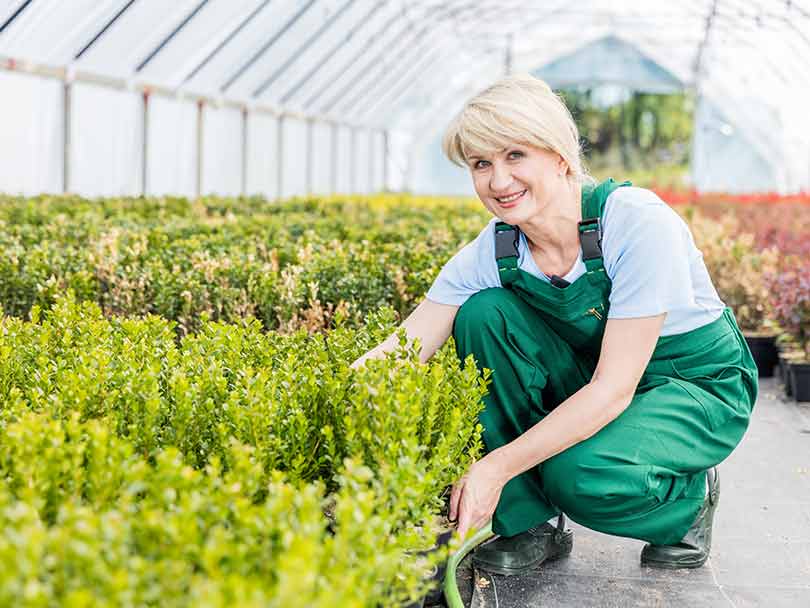By Vicki Spencer, Master Gardener
Shrubs are the foundation of a well-designed landscape and should not be overlooked when planning gardens. They create privacy, serve as backdrops, define garden beds and add seasonal interest. Some blossom early in the spring; others blossom all summer long. My favorites are shrubs that burst with brilliant shades of red and gold in autumn.
Although many choices are available, selecting native shrubs that have adapted to our dry climate and require less water, fertilizer and pruning means less ongoing maintenance. More importantly, natives attract wildlife and contribute to our state’s biodiversity. Of course they must be sited correctly to reap these benefits. Become familiar with the different light, moisture and soil conditions in various parts of your yard and select shrubs appropriately. This will improve survival rates. Container-grown shrubs may be planted any time during the growing season, but the planting site may need to be amended with organic material.
Natives that are adapted to Colorado’s high altitudes include rabbitbrush, woods’ rose, mountain mahogany, wax currant, golden currant, three-leaf sumac, sagebrush, hoptree, false indigo, Apache plume and chokecherry. Rabbitbrush attracts butterflies with yellow flower clusters at elevations up to 9,000 feet. Woods’ rose has pink flower clusters that attract wildlife despite its reddish brown, prickly stems. Golden currant has a distinctive clove scent and bright yellow flowers that attract birds. False indigo grows at up to 6,000 feet and displays purple flowers and deep green foliage that turns bright yellow in fall. Apache plume, a showy native western shrub, grows well at elevations ranging from 3,000 to 8,000 feet. Its wheat-colored branches are lined with green lobed leaves. White spring blossoms are followed by delicate, feathery white to pink fruit clusters making it a stunning accent to colorful perennials.
Fernbush is native to the Colorado Plateau, attracts pollinators and makes an excellent hedge border in difficult-to-grow dry areas. It’s an interesting shrub with aromatic leaves and naked buds, which give the appearance of the plant keeping its little leaves all winter. Viburnum (native to North America) is a classic border shrub providing an excellent habitat for small songbirds along the Front Range. Most varieties have showy, fragrant flowers. Summer snowflake provides a magnificent display from midspring throughout the summer and develops red fruit and stunning foliage in the fall.
Growing natives does not exclude planting nonnatives adapted to Colorado’s climate as long as moisture, light and soil requirements are met. For example, early amethyst (native to Asia) is a compact, rounded, deciduous shrub that tolerates most conditions and adds striking color to fall gardens. Its purple berries attract a variety of songbirds, yet deer rarely bother it. Planting in mass improves cross pollination and fruit production.
While it’s tempting to collect natives while enjoying Colorado’s natural landscapes, it should be avoided. Disturbing the soil creates spaces for invasive plants to take over and interferes with biodiversity of the natural landscape. It’s best to rely on local nurseries, which carry many native species and can help you select the best plant for your site.
Gardener Vicki Spencer has an eclectic background in conservation, water, natural resources and more.

